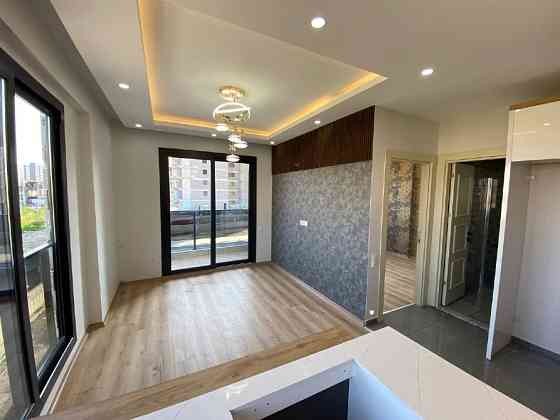
Secrets of successful investments in Slovenian real estate in 2025
Slovenia is a small country in the heart of Europe, which in recent years has attracted more and more attention from investors looking to make profitable investments in real estate. A stable economy, picturesque nature, developed infrastructure and a high standard of living make Slovenia one of the most promising investment destinations. We will take a detailed look at the key trends in the Slovenian real estate market in 2025, analyze the factors influencing its development and give practical recommendations for successful investment. You will learn about market growth and price stabilization, a shortage of new housing and an increase in demand for rentals, attractiveness for foreign investors and potentially high returns on investment. We will also talk about technological innovations and environmental trends that are changing the face of Slovenian real estate, improving its quality, efficiency and liquidity, about commercial and tourist real estate, as well as the impact of infrastructure development and the urban environment. We will assess possible risks and provide forecasts for further market development so that you can make informed investment decisions.
Main trends in the Slovenian real estate market in 2025
- Market growth and price stabilization — the Slovenian real estate market has demonstrated impressive resilience and stable growth over the past few years. Having recovered from the 2008 crisis, real estate prices are steadily growing both in the capital Ljubljana and in the country's popular resorts. This is facilitated by the limited supply of new properties and the ever-increasing demand from local buyers and foreign investors. According to analysts, in 2025, price growth has slowed down, but remains in the positive zone. In the largest cities and tourist regions, the cost per square meter has stabilized at a fairly high level. The shortage of new housing is still felt, despite the activation of the construction industry. Foreign buyers make about 20% of all transactions, which confirms the investment attractiveness of Slovenian real estate at the international level.
- Supply and demand — demand for housing in Slovenia continues to outpace supply, especially in Ljubljana, the second-largest city of Maribor, the seaside town of Koper and the ski resorts in the Alps. Despite the increase in the number of building permits and the launch of new projects, the market is not yet able to fully satisfy the needs of buyers and tenants. This leads to a noticeable increase in rental prices — by an average of 5-10% per year. The high occupancy rate of long-term rental properties and the active development of short-term rentals in tourist areas make investment in income-generating real estate a very promising direction.
- Investments — a stable economic and political situation combined with a favorable tax regime create ideal conditions for investing in real estate in Slovenia. The country attracts foreign investors with a high quality of life, transparent legislation and significant market growth potential. In 2024-2025, the return on investment in residential and commercial properties in Slovenia reached an unexpectedly high level. This is facilitated by a steady increase in prices, constant demand for rentals, an increase in rental rates and an increase in real estate capitalization. Investors not only save, but also increase their funds, receiving a solid passive income. Investing in Slovenian real estate has a number of undeniable advantages:
- High potential return on investment.
- Low share of empty properties and stable demand for long-term rent.
- Sustainability of the economy and political stability of the country.
- Continuous development of infrastructure and implementation of digital services.
At the same time, possible disadvantages cannot be ignored:
- Dependence of the real estate market on the general economic situation in the country and the world.
- Risk of reduced profitability with a sharp increase in supply on the market.
- Importance of careful analysis of properties and diversification of the investment portfolio.
- Commercial and tourist real estate — In 2025, there will be increased investor interest in Slovenia's commercial real estate — office centers, retail space and logistics complexes. Properties located near major highways, large cities and the seaport of Koper are particularly promising. The development of the country's business and economy, as well as the implementation of large-scale infrastructure projects, contribute to the growth of this market segment. Tourist real estate also does not lose its attractiveness. The increase in tourist flow stimulates demand for apartments in ski resorts, historical city centers and on the Adriatic coast. Owners of such properties can receive a stable income from short-term rent, especially during the high season.
- Technological and digital trends — 2025 will be marked by the active introduction of innovations in the real estate sector in Slovenia:
Install our app and get all the tools you need to search for real estate abroad in your smartphone! The mobile application will allow you to quickly access your personal account, manage your favorite properties and track your requests, directly exchange messages with sellers and buyers.

- «Smart homes» and advanced automation systems are becoming an integral part of new construction, increasing the comfort and functionality of housing for buyers and tenants.
- Online platforms and digitalization of the market simplify the processes of searching, buying and managing real estate, making transactions more transparent and efficient.
- Using BIM (Building Information Modeling) technologies in design and construction helps to optimize costs, deadlines and quality of project implementation.
- Environmental trends and energy efficiency — developers are increasingly using «green» materials and technologies that meet modern energy saving standards. Such houses are equipped with solar panels, heat recovery systems, smart meters and other innovative solutions. This not only reduces operating costs, but also increases the liquidity and attractiveness of properties on the market.
- Impact of infrastructure and urban environment — the development of transport, energy and digital infrastructure has a positive impact on the value and potential of real estate in Slovenia. Areas with good transport accessibility, high-quality roads, reliable energy and water supply, access to high-speed Internet and developed social infrastructure are in high demand among buyers and tenants. Public and private investment in these areas stimulates the growth of real estate prices and improves the quality of life of the population.
Recommendations for investors
To successfully invest in Slovenian real estate in 2025, follow these tips:
- Conduct thorough market analysis and select properties in locations with stable demand and potential for price growth.
- Diversify your portfolio by combining residential, commercial and tourist properties to reduce risks.
- Involve professional lawyers, brokers and analysts to evaluate properties and structure transactions.
- Consider long-term trends such as infrastructure development, innovation and changing buyer preferences.
Manage your investments proactively, regularly monitor the market and be prepared to adapt to changing conditions.
Risks and forecasts
Despite the overall positive trend of price and yield growth, the Slovenian real estate market is beginning to show the first signs of a slowdown in 2025. This is especially noticeable in the secondary segment, where an increase in supply due to active construction of new properties may lead to a slight price correction. If the rate of new space introduction remains at the current high level, a temporary decrease in demand and stabilization of the cost per square meter are possible. However, in general, experts assess the long-term prospects of the market as positive. Sustainable economic growth, improving quality of life, tourism development and the influx of foreign investment will support demand for real estate in Slovenia. At the same time, it is important to take into account potential risks and closely monitor the balance of supply and demand in various market segments.
In conclusion, I would like to emphasize once again that investing in real estate in Slovenia in 2025 is a smart choice for those looking for a reliable and promising way to invest. The combination of stable economic growth, developed infrastructure, innovative technologies and high quality of life makes Slovenia one of the most attractive destinations for real estate investment in Central Europe. Following expert advice, analyzing the market and choosing the best properties, you can receive a stable rental income, enjoy the growth in the value of your assets and fully utilize the potential of this amazing country. Join the growing community of investors who have already discovered the appeal of Slovenian real estate and start your journey to success and prosperity today! Slovenia is a small country with great potential. Its real estate market in 2025 offers great opportunities for investors who value stability, innovation and high quality of life. Don’t miss your chance to become part of this successful and dynamically developing market!
 20
20
 55
55  2
2  1
1  1
1  12
12  11
11
 6
6
 20
20
 60
60  2
2  1
1  1
1  7
7 
An overview of key trends and prospects for the Slovenian real estate market in 2025: stable growth, demand from foreigners, shortage of new housing, technological innovations and environmental trends with unexpectedly high returns for investors.

New Zealand has radically reformed its investment visa program, turning it into one of the most accessible and flexible in the world. The removal of language requirements, a reduction in mandatory length of stay and an expansion of investment opportunities have led to a sharp increase in interest from foreign investors. We will tell you about the details of the reform, the benefits for investors and the impact on the region's economy.

House and rental prices in the EU continued their record growth in 2024, with real estate prices up 4.9% and rents up 3.2%. The Baltic and Central European countries such as Estonia, Lithuania and Hungary led the way, while some Western European countries experienced a cooling market. Experts predict a slowdown in price growth in 2025. We offer a detailed analysis of the trends and influencing factors.


























